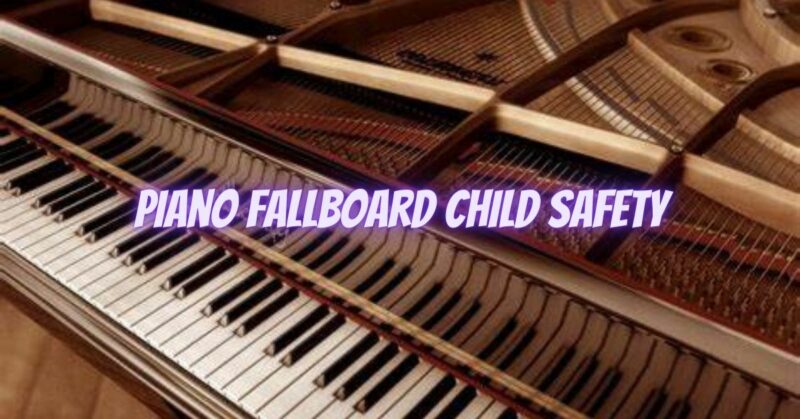Pianos are beautiful instruments that bring joy and musical expression into our lives. However, it’s important to prioritize safety, especially when young children are around. The fallboard, the hinged lid that covers the keys, can pose potential hazards if not properly managed. In this article, we will explore tips and precautions to ensure child safety when it comes to the piano fallboard.
- Supervision and Education:
a. Supervision: Young children should always be supervised when they are near a piano. An adult or responsible caregiver should be present to ensure their safety and prevent any accidents.
b. Education: Teach children about the piano’s delicate parts, including the fallboard. Explain that it should not be climbed on, used as a step, or pushed forcefully. Educate them about the importance of treating the piano with care and respect.
- Establishing Boundaries:
a. Restricted Access: Consider implementing physical barriers or childproofing measures to restrict access to the piano when unsupervised. Install child safety gates or place furniture strategically to prevent children from reaching the fallboard.
b. Clear Rules: Clearly communicate and enforce rules regarding piano usage and interaction. Make it clear to children that the fallboard is not a toy and should not be played with or opened without adult permission.
- Fallboard Closing Mechanisms:
a. Soft-Close Mechanisms: Some modern pianos are equipped with soft-close mechanisms, which prevent the fallboard from slamming shut when released. These mechanisms ensure a slow and controlled closing motion, reducing the risk of accidental injuries.
b. Regular Maintenance: If your piano does not have a soft-close mechanism, ensure that the fallboard is in good working condition. Regular maintenance, including hinge lubrication and adjustment, will help ensure smooth operation and prevent unexpected closures.
- Safe Storage of Fallboard:
a. Secure Latching: When the piano is not in use, securely latch the fallboard to prevent it from accidentally opening or falling down unexpectedly. This prevents children from accidentally getting their fingers caught or being hit by the fallboard.
b. Removal of Objects: Remove any objects, such as toys or books, from the top of the fallboard before closing it. This avoids the risk of items falling off when the fallboard is opened or closed, potentially causing injury.
- Leading by Example:
a. Role Model Behavior: Set a good example by treating the piano with care and demonstrating safe practices. Children are more likely to follow safety guidelines if they observe responsible behavior from adults.
Conclusion:
Child safety is of utmost importance, even when it comes to seemingly innocuous items like a piano fallboard. By implementing these tips and precautions, we can ensure that children are protected from potential hazards associated with the fallboard. Supervision, education, establishing boundaries, maintaining fallboard closing mechanisms, and safe storage practices contribute to a safe and enjoyable musical environment. By prioritizing child safety and responsible piano usage, we can create a harmonious space where children can develop a love for music while being protected from preventable accidents.


